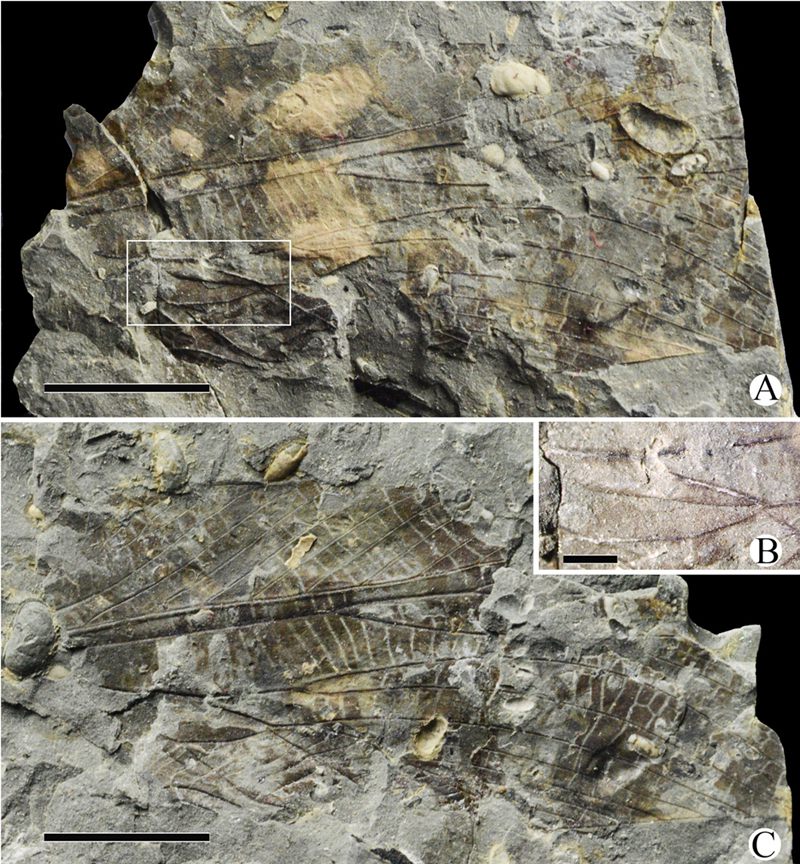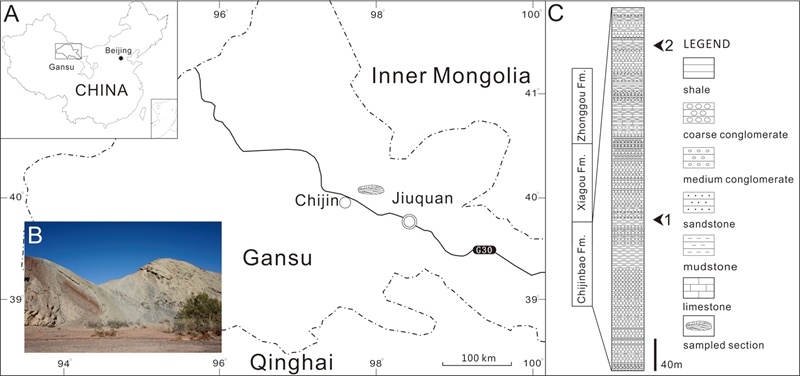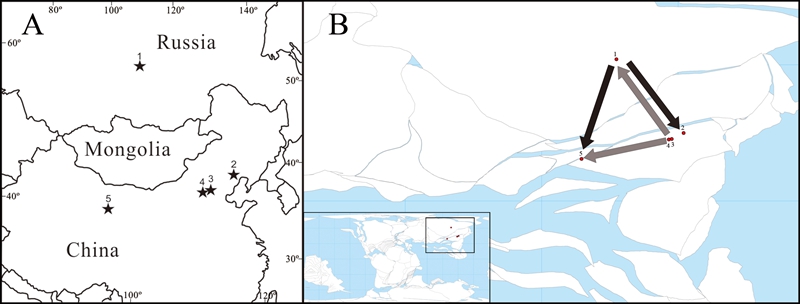
Parahagla sibirica Sharov, 1968 from the Jiuquan Basin
In the Jiuquan Basin of Gansu Province, northwestern China, the Lower Cretaceous Xinminpu (Xinminbao) Group consists of the Chijinpu (Chijinbao), the Xiagou and the Zhonggou formations in ascending order. Abundant insect fossils have been discovered in these strata since 1947 when the giant mayfly Ephemeropsis trisetalis Eichwald was discovered in the Jiuquan Basin. Typical components of the Jehol Biota have been reported from this basin, including Coptoclava longipoda, E. trisetalis and Lycoptera. Although these strata have been studied for a long time, its age is still in dispute. During the past ten years, Professor ZHANG Haichun and his research group from the Nanjing Institute of Geology and Palaeontology, Chinese Academy of Sciences have investigated these strata in Jiuquan and collected abundant insect fossils from the Chijinbao, Xiagou and Zhonggou formations.
Recently, postgraduate WANG He and other scholars from NIGPAS firstly reported fossil Orthoptera, Parahagla sibirica Sharov, 1968, from the Chjinbao Formation in the Jiuquan Basin. The diagnosis of the species is revised based on the new specimen. To date, more than ten specimens assigned to P. sibirica have been found in the Lower Cretaceous of Siberia and North China, based on which we discuss its palaeogeographic and stratigraphic distributions. Two possible migration paths of the species are indicated as follows: (1) This species initially appeared in northern Hebei and western Liaoning, China at latest in the earliest Aptian, and further migrated northwestwards to Transbaikalia and westwards to Gansu Province soon later (early-middle Aptian). (2) Or alternatively, it originally occurred in Transbaikalia earlier than the Aptian and further migrated southwards to northern China during the Aptian.
This research was supported by the Chinese Academy of Sciences, the National Basic Research Program and the National Natural Science Foundation of China.
The paper was published in Cretaceous Research (Wang He, Zheng Daran, Hou Xudong, Lei Xiaojie, Zhang Qingqing, Wang Bo, Fang Yan, Jarzembowski E.A., Zhang Haichun, 2016. The early Cretaceous orthopteranParahagla sibirica Sharov, 1968 (Prophalangopsidae) from the Jiuquan Basin of China and its palaeogeographic significance.Cretaceous Research57: 40-45).

Geographic and stratigraphic details of the orthoperan Parahagla sibirica

Distribution and suggested spread of Parahagla sibirica in the Early Cretaceous.
Download:
